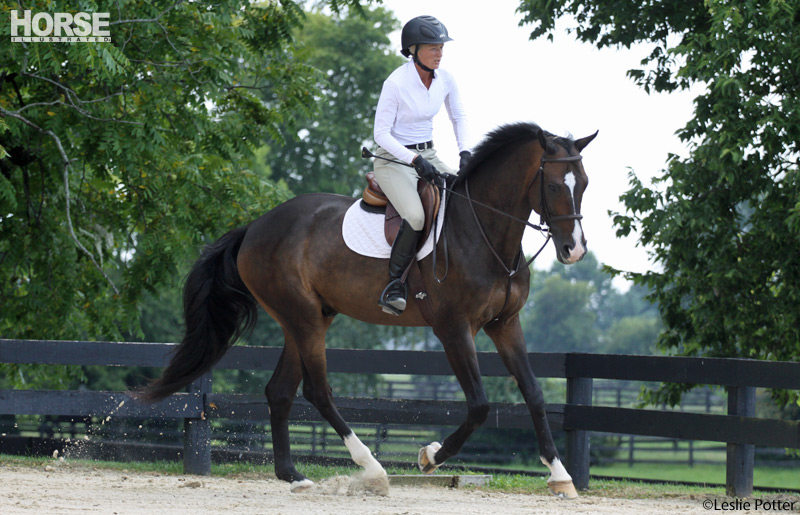If your horse has ever received bodywork, chances are good that you have learned how much the region of his lower lumbar spine and sacral joint either impedes or improves his ability to perform well. Similarly to humans, this area is quick to develop tension and restrict mobility because of the number of forces that move through here. It plays a critical role in both stabilizing the horse’s posture as well as moving him forward across the ground. For these reasons, it can suffer even during situations of correct training.

Further, the hinge point of the hind leg differs for trot and canter, which means frequent transitions between both gaits helps mobilize all joints more fully. In trot, the leg swings from the hip, whereas during canter strides it swings from higher up near the sacrum. Obviously, bringing more swing to this sacral region helps alleviate restriction that might be present. Transitioning in and out of canter can coax tension or stiffness out of this region by targeting it with brief periods of good quality strides without the negative results that come from long segments of repetitive motion—bracing, failed muscular contractions, rushing, compromised posture.
Foremost, the key to successful trot-canter transitions lies in the rider’s timing of aids. A rider needs to learn the feel of when to properly cue for the canter, which is when her horse’s inside front leg is just about to swing forward. This is the only instant that it is prepped to strike off on the inside canter lead. If the rider asks for the canter at any other point except for this phase of a stride, the horse will need to take a few extra steps before he is organized to strike off at just the right point. In other words, his response will lag behind the rider’s cue. This can lead to the horse rushing off or hollowing his back.
I always tell riders learning this timing to look down and watch for when the horse’s inside front hoof is under her stirrup. At this moment, the horse is just about to swing the leg forward which is the instant to give the canter cue. For some riders, it can help to switch to posting the trot on the inside diagonal as this helps them feel that leg better. As a general rule, I recommend riding trot-canter transitions as a gymnastic exercise from a posting trot, since this keeps the rider’s seat more fluid. Many aspiring dressage riders believe they need to ride these transitions from sitting trot, but since the whole purpose here is to bring therapeutic effect to the horse’s back, it is best to unburden it as much as possible during the exercise. Aim to ride five good upward and downward transitions in each direction. Do this at least once a week, don’t panic if they are a little messy or if your horse is not perfectly on the bit. Progress is just around the next corner.
Liked this article? Here are others you’ll love:
In Transition
Walk-to-Lope Transitions
Dressage Transitions






Great to know. I do a lot of these transitions with my driving horses. I’m glad to know they help so much.